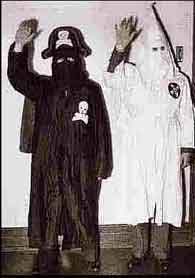 It is no secret that during and after the Mexican American War there were distinct efforts by Southerners to increase the slaveholding territory of the United States. Filibustering became the term by which these men and their missions were known. Tennessean William Walker attempted to take rule in a section of Mexico, and later proclaimed himself President of Nicaragua. For all of his efforts he was captured and executed in Honduras in 1860. John A. Quitman, a former governor of Mississippi, and a general in the Mexican War, attempted to raise men to capture Cuba but later dropped the plan at the federal government's insistence.
It is no secret that during and after the Mexican American War there were distinct efforts by Southerners to increase the slaveholding territory of the United States. Filibustering became the term by which these men and their missions were known. Tennessean William Walker attempted to take rule in a section of Mexico, and later proclaimed himself President of Nicaragua. For all of his efforts he was captured and executed in Honduras in 1860. John A. Quitman, a former governor of Mississippi, and a general in the Mexican War, attempted to raise men to capture Cuba but later dropped the plan at the federal government's insistence.A secret organization of filibusterers emerged in the 1850s known as the Knights of the Golden Circle (KGC). The group was founded by George W.L. Bickley in 1854. Bickley was born in southwest Virginia in 1819 and claimed to have been a doctor, but was later discredited. He had moved to Cincinnati in 1851 to take a position as a professor in a medical college and also wrote for a living. He started the first "castle," or local branch, in 1854 in Cincinnati, but quickly took his efforts to the South after being harassed by his creditors.
The mid to late 1850s was the peak era for filibustering and Bickley was well received in the South. Bickley's plan was to develop colonies of Southern slaveholders in the West Indies, Central America, and South America; with the already strong slaveholding region of the Southern United States, these other three would form a "golden circle" of prosperity. Bickley believed that Mexico was the place to start his mission. Apparently, realizing that their proximity to Texas, and their relatively easy defeat in the recent war, made annexing northern Mexico the prime target. Bickley received his heartiest support for his organization in the Lone Star state, where he founded over 30 castles.
Ironically the quest for Southern independence ,and thus Civil War, brought the end of the KGC. With all efforts being made to defend the Southern states and win its independence, there was little time, money, or effort to be made in attempting to seize land in neighboring Mexico. Although, there were some KGC members that took part in the 1862 west Texas and New Mexico campaigns of General Henry Sibley, a man who also had ties to the KGC.
The KGC received some significant support in the lower North (southern Indiana, Illinois and Ohio) and border states (Kentucky and Missouri), especially among the Copperheads (Democrats opposed to Radical Republicans and carrying on the war) during the war. In late 1863 the KGC was reorganized as the Order of American Knights, and then in 1864 it was known as the Order of the Sons of Liberty. As the Confederacy's military success wained in 1864, and as Lincoln was reelected to a second term, the organization lost much of its interest and was officially disbanded.
A number of conspiracies have developed around the KGC since the end of the Civil War. Some credit the KGC with General John Hunt Morgan's raid into Southern Indiana and Ohio in 1863, and with involvement in Lincoln's assassination in 1865, as depicted in the recent movie American Treasure 2: Book of Secrets.
There are a number of commonalities that can be seen between the KGC and the later Ku Klux Klan. The secretiveness of the organizations and use of mysterious symbols such as skulls and cross bones, along with their commitment to white supremacy, would lead one to believe that the KKK, organized in 1866, relied on the KGC for some of its inspiration.
Posted by Tim Talbott at 8:29 PM
THURSDAY, NOVEMBER 12, 2009
http://randomthoughtsonhistory.blogspot.com/2009/11/knights-of-golden-circle.html